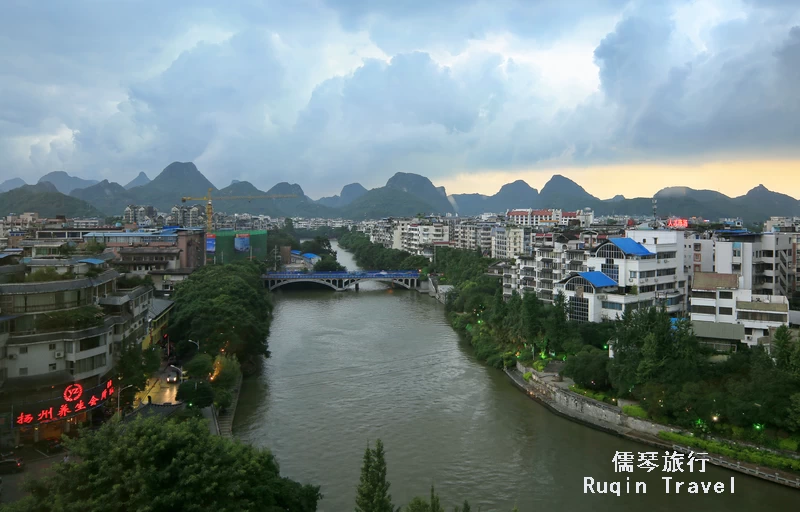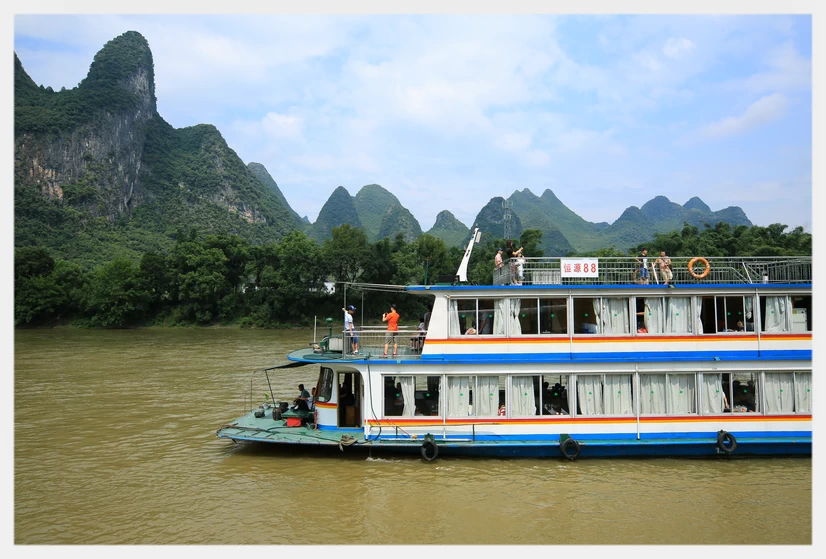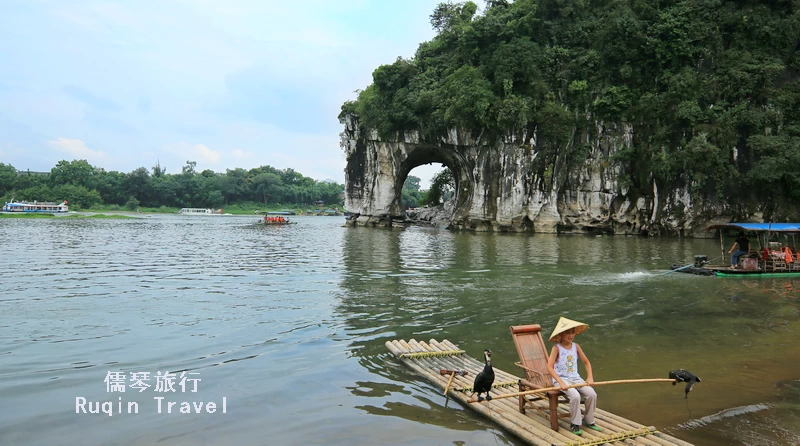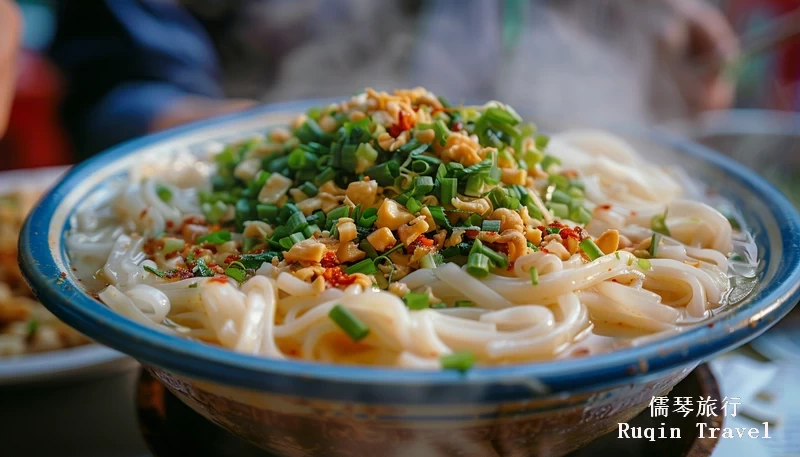Welcome to Facts about Guilin – Your Ultimate Guide to Guilin! This article provides detailed insights into Guilin, a picturesque city in China. Here, you will find useful information about its renowned sites, fascinating facts, and essential travel tips. This guide is designed to help you navigate and appreciate Guilin’s unique charm.
1. Introduction to Guilin
Guilin, located in southern China’s Guangxi Zhuang Autonomous Region, is renowned for its stunning natural beauty. With a population of over 4.9 million people, Guilin is a bustling city known for its dramatic landscapes.
👉 All Guilin Tours & Excursions
Its name means “Forest of Sweet Osmanthus,” referring to the fragrant trees found throughout the area.
2. What is Guilin Known For?
Guilin is celebrated for its breathtaking natural landscapes, particularly its dramatic karst mountains and the scenic Li River. The city’s name, “Forest of Sweet Osmanthus,” highlights the abundance of these fragrant trees. The unique karst formations, with their steep limestone peaks, have inspired Chinese art and poetry for centuries.
The Li River offers peaceful cruises and bamboo rafting, providing stunning views of the surrounding scenery.
Additionally, Guilin is famous for its intricate cave systems like the Reed Flute Cave, colorful stalactites and stalagmites, and rich cultural heritage, including historical sites and vibrant local festivals.
3. Guilin Karst Mountains
The karst mountains are a defining feature of Guilin’s landscape. These limestone formations were shaped over millions of years by erosion. The most iconic of these mountains include Elephant Trunk Hill and Fubo Hill. Visitors often marvel at their steep, rugged peaks and lush greenery.

Additionally, these mountains are frequently depicted in traditional Chinese paintings and poetry, highlighting their cultural significance. The unique landscape attracts geologists and nature enthusiasts from around the world. Hiking and climbing opportunities abound, offering spectacular views of the surrounding area. The karst mountains truly embody the natural beauty of Guilin.
4. Li River Facts
The Li River is a must-see for any visitor to Guilin. This 83-kilometer river flows from Guilin to Yangshuo, offering stunning views of the surrounding karst mountains.
One interesting fact is that the Li River is depicted on the 20 yuan banknote, highlighting its cultural importance.
The river is also famous for its bamboo rafting and river cruises, providing a peaceful way to enjoy the scenery.

Additionally, the Li River hosts annual fishing festivals, where traditional cormorant fishing methods are showcased. The serene landscapes along the river have inspired countless artists and photographers, making it a top destination for nature lovers.
5. Reed Flute Cave Facts
Reed Flute Cave, also known as the “Palace of Natural Arts,” is another highlight of Guilin. This limestone cave is over 180 million years old and features colorful stalactites and stalagmites.
The cave got its name from the reeds growing outside, which can be made into flutes. The illuminated formations inside create a magical atmosphere, making it a popular attraction.
6. Guilin Facts – Population
Guilin has a diverse population of around 4.9 million people. This vibrant mix includes various ethnic groups, such as the Han, Zhuang, Yao, and Miao. Each group contributes to the rich cultural tapestry of the city, bringing unique traditions, festivals, and cuisines.
The Zhuang people, the largest ethnic minority in Guilin, are known for their distinctive folk songs and dances. The Yao and Miao communities also add to the cultural diversity with their colorful traditional attire and handicrafts. This blend of cultures is evident in Guilin’s bustling markets, local festivals, and daily life, creating a lively and welcoming atmosphere for visitors.
7. Guilin Facts – Guilin Weather
Guilin enjoys a subtropical monsoon climate, characterized by mild winters and hot, humid summers. The best time to visit is during spring (April to June) and autumn (September to October) when the weather is pleasant and the landscape is lush and vibrant.
Summer can be very hot and humid, with temperatures often exceeding 30°C (86°F). Conversely, winter is relatively mild, with temperatures rarely dropping below 5°C (41°F), but it can be damp.
Rain is frequent, especially from April to August, so carrying an umbrella or raincoat is advisable. This varied climate ensures Guilin’s scenery is beautiful year-round.
8. Guilin Facts – History of Guilin
Guilin’s history spans over 2,000 years, beginning as a significant cultural and economic center during the Qin Dynasty. It was strategically important due to its location, serving as a gateway between the central plains of China and the southern regions.
Throughout the Tang and Song Dynasties, Guilin flourished, becoming renowned for its beautiful landscapes and cultural significance.
The Ming and Qing Dynasties further enhanced its historical and cultural heritage with the construction of many temples and pagodas.
Today, Guilin is a blend of ancient history and modern development, preserving its rich past while embracing the future.
9. Top Attractions in Guilin
Elephant Trunk Hill
Elephant Trunk Hill is the symbol of Guilin. It resembles an elephant drinking water from the Li River. Visitors can explore Water Moon Cave and enjoy panoramic views from the top.

Seven Star Park
Seven Star Park is the largest park in Guilin, named after the seven peaks that resemble the Big Dipper constellation. The park features caves, bridges, and a zoo, making it a great spot for family outings.
Longji Rice Terraces
Located about 100 kilometers from Guilin, the Longji Rice Terraces are a stunning example of agricultural artistry. The terraces were built over 650 years ago and are best visited in spring or autumn for the most dramatic views.
10. Local Cuisine
Guilin’s cuisine is known for its unique flavors and local ingredients, offering a delightful culinary experience. One must-try dish is Guilin Rice Noodles, a staple often enjoyed for breakfast. These noodles are typically served with pickled vegetables, peanuts, and a savory broth. Check out The Local Foods You should try in Guilin for more information.

Another local specialty is Lipu Taro Looped Meat, a hearty dish made with taro and pork belly, seasoned with a variety of spices.
Additionally, the city is famous for its dishes made with freshwater fish from the Li River, prepared with traditional methods. Street food is also popular, with vendors offering snacks like stuffed snails and crispy rice cakes.
11. Cultural Experiences
Guilin offers rich cultural experiences that highlight its diverse heritage. Traditional festivals, such as the Zhuang people’s March 3rd Festival, feature vibrant singing, dancing, and cultural performances.
Visitors can also enjoy the Guilin Opera, which combines local storytelling with dramatic music and costumes.
The city’s museums, like the Guilin Museum and the Guilin Art Museum, provide insights into its historical and artistic legacy.
Local markets, such as the Zhengyang Pedestrian Street, offer a taste of daily life and traditional crafts. Additionally, workshops on calligraphy, painting, and cooking allow tourists to immerse themselves in the local culture and traditions.
12. Outdoor Activities
Hiking
Hiking is a popular activity in Guilin, with many trails offering spectacular views. The hike to the top of Moon Hill in Yangshuo is a favorite among tourists. Another popular spot is the Longji Rice Terraces, where visitors can trek through terraced fields and enjoy breathtaking scenery.
Bamboo Rafting
Bamboo rafting on the Yulong River provides a peaceful way to enjoy Guilin’s natural beauty. The calm waters and stunning scenery make for a relaxing experience.

Cycling
Cycling is another great way to explore Guilin, especially in the countryside around Yangshuo, where scenic paths wind through karst landscapes and picturesque villages.
Rock Climbing
For the more adventurous, Guilin offers excellent rock climbing opportunities, particularly in the karst formations of Yangshuo, which attract climbers from around the world.
14. Interesting Facts about Guilin
Guilin has been a popular tourist destination since the Tang Dynasty, known for its stunning natural beauty and cultural significance.
The city’s landscape has inspired many famous Chinese poets and artists over the centuries.
Guilin is twinned with several cities worldwide, including Orlando, Florida, and Nishikatsura, Japan, highlighting its international appeal.
Additionally, Guilin is home to the largest karst formations in the world, attracting geologists and nature enthusiasts.
The city’s name, meaning “Forest of Sweet Osmanthus,” reflects the abundance of these fragrant trees, which bloom in autumn. Guilin’s picturesque scenery is even depicted on the 20 yuan banknote.
👉 All Guilin Tours & Excursions
Guilin is a city of unmatched natural beauty and cultural richness. Whether you are cruising down the Li River, exploring ancient caves, or tasting local delicacies, Guilin offers a memorable experience for every traveler. Use this “Facts about Guilin” guide to plan your visit and make the most of your trip to this enchanting city.


